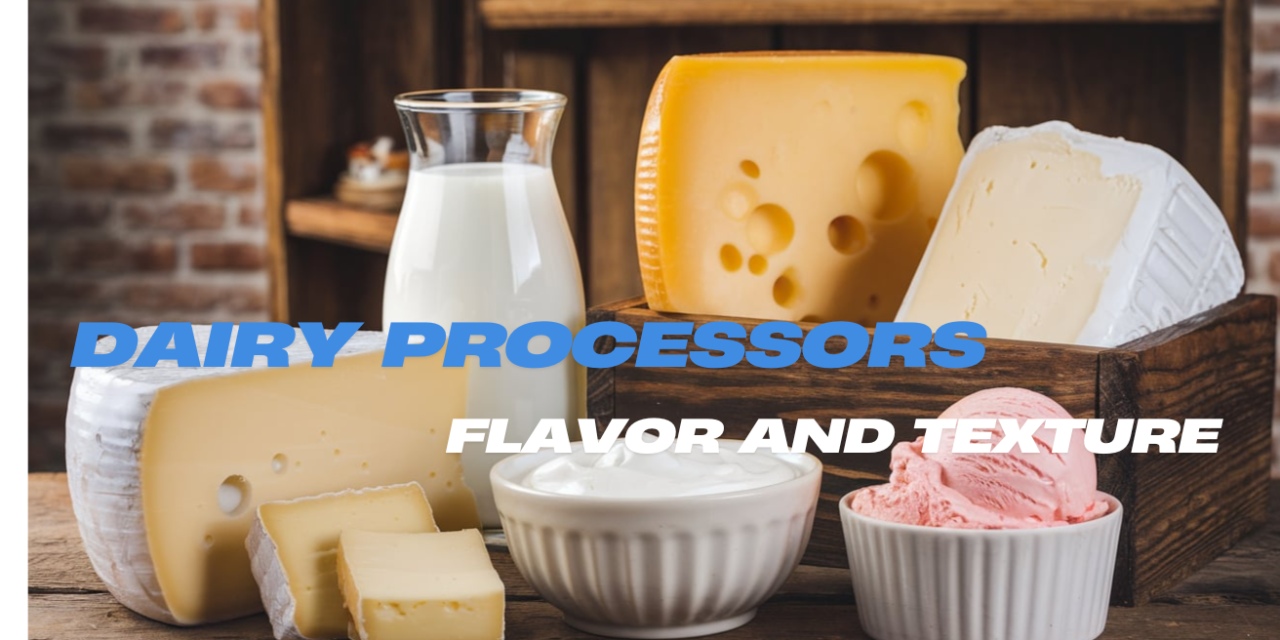Dairy processors maintain consistency in flavor and texture through a combination of advanced technologies, strict quality control practices, and standardized processes. Here’s how they achieve this:
1. Sourcing High-Quality Raw Milk
- Standardized Milk Quality: Ensuring that raw milk meets specific fat, protein, and bacterial count standards before processing.
- Examples: Testing for freshness, acidity, and absence of contaminants like antibiotics.
- Regional Consistency: Sourcing milk from the same farms or regions to minimize variability in flavor due to feed or breed differences.
2. Pasteurization and Homogenization
- Pasteurization: Heating milk to eliminate harmful microorganisms while preserving flavor and nutrients.
- Examples: Using consistent time and temperature parameters for uniform results.
- Homogenization: Breaking down fat globules to create a uniform texture and prevent cream separation.
- Examples: Achieving a smooth and creamy consistency in milk and cream.
3. Advanced Filtration and Processing Techniques
- Microfiltration and Ultrafiltration: Removing unwanted particles or bacteria while preserving essential components for flavor and texture.
- Precision Equipment: Using automated machinery calibrated for consistency in temperature, mixing speed, and processing times.
4. Standardizing Ingredients
- Controlled Additions: Using precise measurements of additives like stabilizers, emulsifiers, or cultures to ensure uniformity.
- Examples: Adding exact amounts of rennet in cheese-making or stabilizers in yogurt production.
- Fortification: Consistently adding vitamins, minerals, or other nutrients to enriched dairy products.
5. Quality Control Testing
- Sensory Evaluation: Regular taste, smell, and texture assessments by trained panels.
- Examples: Testing for creaminess in yogurt or sharpness in cheese flavor.
- Chemical and Microbial Testing: Verifying that the pH, fat content, and microbial levels are consistent with standards.
6. Controlled Fermentation
- Use of Starter Cultures: Employing standardized bacterial strains for consistent flavor and texture in products like yogurt and cheese.
- Examples: Maintaining temperature and timing during fermentation to control acidity and texture.
- Monitoring Conditions: Ensuring consistent incubation and aging conditions.
7. Precision Blending
- Fat and Protein Adjustment: Blending raw milk to maintain a consistent ratio of fat and protein across batches.
- Examples: Skimming or adding cream to achieve a uniform fat percentage.
- Mixing Ingredients: Using automated mixers to evenly distribute flavors, sweeteners, or other additives.
8. Packaging and Storage
- Protective Packaging: Using packaging that preserves flavor and texture during storage and transport.
- Examples: Vacuum-sealed packaging for cheese and aseptic cartons for milk.
- Temperature Control: Maintaining consistent refrigeration to prevent spoilage or texture changes.
9. Automation and Monitoring Systems
- Real-Time Monitoring: Using sensors to track parameters like temperature, viscosity, and pressure throughout the production process.
- Examples: Automated alerts for deviations that could affect quality.
- Data Analytics: Analyzing production data to identify and correct inconsistencies.
10. Employee Training
- Skill Development: Training employees in standardized procedures and quality assurance protocols.
- Examples: Ensuring uniform handling of ingredients and operation of equipment.
11. Continuous Improvement
- Consumer Feedback: Incorporating customer insights to refine flavor and texture consistency.
- Ongoing Innovation: Researching and adopting new techniques to enhance uniformity in production.









